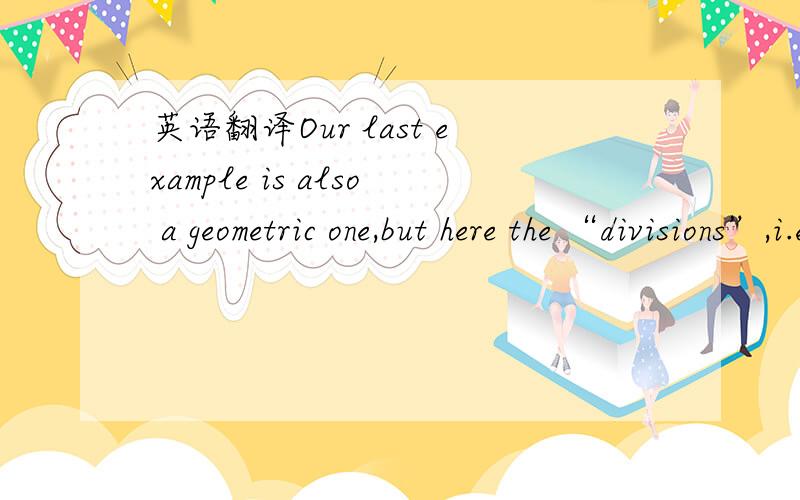英语翻译Our last example is also a geometric one,but here the “divisions”,i.e.the boxes,are notwhole parts of the given geometric figure,indeed,they are points in it.The difficulty isrealizing that it is these precise points that will help (o
来源:学生作业帮助网 编辑:作业帮 时间:2024/11/26 11:29:17

英语翻译Our last example is also a geometric one,but here the “divisions”,i.e.the boxes,are notwhole parts of the given geometric figure,indeed,they are points in it.The difficulty isrealizing that it is these precise points that will help (o
英语翻译
Our last example is also a geometric one,but here the “divisions”,i.e.the boxes,are not
whole parts of the given geometric figure,indeed,they are points in it.The difficulty is
realizing that it is these precise points that will help (or having a hunch of what those
points are by making a few drawings).
We are given a square and 9 lines cutting through it.Each line cuts the square
into two quadrilaterals,and the ration of the areas of those quadrilaterals is 2:3.
Prove that at least three of these 9 lines pass through the same point.
Since each line divides the square in two quadrilaterals,each line cuts the square
at two non consecutive edges.The figures obtained are trapezoids with two right angles,
and their area is equal to their base (here the side of the square)
multiplied by the height of their “midline”,the line perpendicular to
their two parallel edges and at equal distance from those two edges.
Since for any of those trapezoids their base is the same,the ration of
their midlines must be 2:3.But there are only two possible midlines
for the trapezoids,so we get four different points,call them
midpoints,two on each midline,where the midline of two
trapezoids intersects with one of the 9 given lines.Every one of those lines must pass
through one of these midpoints.We have 4 points and 9 lines,so there is at least one
point through which pass three lines.
We have shown that,given 9 lines,each cutting a square into two trapezoids
whose areas are in the ratio 2:3,at least three of the lines pass through the same point.
We now move on to more difficult problems,which generally necessitate a little
more twist,or work,before applying the pigeonhole principle
英语翻译Our last example is also a geometric one,but here the “divisions”,i.e.the boxes,are notwhole parts of the given geometric figure,indeed,they are points in it.The difficulty isrealizing that it is these precise points that will help (o
不是数学系的,但是大概好像明白了...以下正文:
我们最后一个例子还是几何方面的,但是是从“分解”的角度来看.比如,一个方框,并不是一块一块图形构成的,实际上,它由许多“点”构成.问题在于如何认识到这些点(画一个图会帮助你明白)
假设有一个正方形,用9条线段将它分割,每条线都会把这个正方形按面积2:3的比例分割,请证明9条线中至少有3条会相交在同一个点. 既然每条线都会把这个正方形分成2个四边形,那么每条线一定会与该正方形2条不连续的边相交,那么我们得到的一定是一个至少有2个直角的梯形,它的面积等于它的底边长度乘以他中线的长度(梯形面积=边长*高).显然所有梯形的底边都是一样长度的,那么他们高的比例一定也是2:3. 但是一个梯形肯定只能有2条中线(纵横各1条),那么我们就能得到4个中点,每条中线上有2个.每个中点至少会成为2个梯形的共同中点,且该中点一定包含于已知的9条线.(我这样跟你解释吧:我们每个梯形有4个中点,每个中点至少要经过2条线,但是我们已知有9条这样的线,那么就必须有1个中点要经过3条线---原句翻译说不到这么透彻)
现在我们已经证明了上面这个了,下面我要来点更难的,需要把脑瓜子拧成麻花那样思考才行.接下来就是鸽巢原理.(它的简单形式是 : 把n+1个物体放入n个盒子里,则至少有一个盒子里含有两个或两个以上的物体 .)